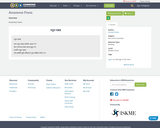
Assamese Poem
- Subject:
- Arts and Humanities
- Material Type:
- Reading
- Author:
- Himadri Dutta
- Date Added:
- 04/30/2020

Assamese Poem
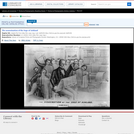
The artist conveys some of the profound disappointment and anger among Henry Clay's many supporters at the nomination of Zachary Taylor at the June 1848 Whig convention in Philadelphia. The convention's act was seen as a betrayal of the elder Whig statesman. In a scene based on act 3, scene 1 of Shakespeare's "Julius Caesar," the artist portrays Clay's opponents as treacherous conspirators stalking the unsuspecting statesman. Clay is pictured seated in the library of his estate at Ashland in Kentucky, reading the New York "Tribune," whose editor Horace Greeley was a Clay stalwart. Ten men with raised daggers prepare to attack him from behind. These include various Whig powers Daniel Webster, editor James Watson Webb, former New York mayor William V. Brady, Pennsylvania congressman David Wilmot, Kentucky senator and former Clay ally John J. Crittenden, and New York state party boss Thurlow Weed. Webster: "How many times shall Caesar bleed in sport" Webb: "Liberty! Freedom! Tyranny is dead!!!" Wilmot: "Go to the Pulpit Brutus" Brady: "And you too Cassius" Crittenden: "Stand fast together, lest some friend of Caesar's Should Chance" Weed: "By the necessity of my Nature, Your Enemy".|Drawn by "W.J.C."|Entered . . . 1848 by H.R. Robinson.|Published by H.R. Robinson 31 Park Row, (Opposite the Park Fountain) N. York.|Title appears as it is written on the item.|Lorant, p. 188.|Weitenkampf, p. 93.|Forms part of: American cartoon print filing series (Library of Congress)|Published in: American political prints, 1766-1876 / Bernard F. Reilly. Boston : G.K. Hall, 1991, entry 1848-22.
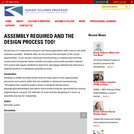
As teachers it is important to interject real-world applications with science and math whenever possible. Students often do not connect the principles to the career opportunities. In our society, advanced manufacturing is creating many exciting careers that incorporate these scientific principles and provide excellent salaries. This project will require students to determine and design methods that will move a selected product in a designed assembly process.
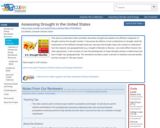
This easy-to-understand video animation describes drought and explains the different categories of drought used by the drought monitor. It discusses the effects of and contributions to drought, what the implications of the different drought levels are, and puts the drought maps into context to understand how the impacts vary geographically (e.g. drought in Nevada vs Kansas - one could affect tourism, the other agriculture). It also touches on how the development of maps/drought severity is determined and how it might vary geographically. The animation provides a basic overview of statistics and percentiles and the concept of '100 year events.'
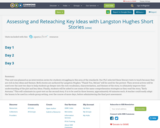
This unit was planned as an intervention series for students struggling in this area of the standards. Our PLC selected these literary texts to teach because they are rich in key ideas and themes. Both stories are authored by Langston Hughes. "Thank You, Ma'am" will be used for the pretest. Then several actives will be used over the next two days to help students go deeper into the rich vocabulary, characterization, and themes of the story, to ultimately improve their understanding of the plot and key ideas. Finally, students will be asked to use some of the same comprehension strategies as they read the story, "Early Autumn." This will culminate in a post-test on the second story.
It is to be used in three lessons, approximately 40 minutes each. A teacher could easily adapt the lesson to be used in a whole group setting, over the course of more days, before administering the final post assessment.

Educators and parents can use the Washington Starting Smarter site to better understand the scores and reports for the Smarter Balanced tests, see sample items, and access additional resources.All resources on the site are copyright The Regents of the University of California. Though the connected resources are free for viewing online, please note that your permitted use of the materials for other uses will vary. Image by StartupStockPhotos from Pixabay
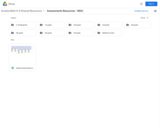
Assessments/Resources Eureka Math Grades K-8

After teaching your unit on stress and stress management, use this assignment for students to identify what their stressors are and how they manage them.
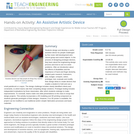
Students design and develop a useful assistive device for people challenged by fine motor skill development who cannot grasp and control objects. In the process of designing prototype devices, they learn about the engineering design process and how to use it to solve problems. After an introduction about the effects of disabilities and the importance of hand and finger dexterity, student pairs research, brainstorm, plan, budget, compare, select, prototype, test, evaluate and modify their design ideas to create devices that enable a student to hold and use a small paintbrush or crayon. The design challenge includes clearly identified criteria and constraints, to which teams rate their competing design solutions. Prototype testing includes independent evaluations by three classmates, after which students redesign to make improvements. To conclude, teams make one-slide presentations to the class to recap their design projects. This activity incorporates a 3D modeling and 3D printing component as students generate prototypes of their designs. However, if no 3D printer is available, the project can be modified to use traditional and/or simpler fabrication processes and basic materials.
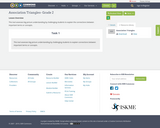
This tool assesses big picture understanding by challenging students to explain the connections between important terms or concepts.
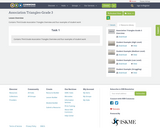
Contains Third Grade Association Triangles Overview and four examples of student work
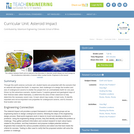
Through this earth science curricular unit, student teams are presented with the scenario that an asteroid will impact the Earth. In response, their challenge is to design the location and size of underground caverns to shelter the people from an uninhabitable Earth for one year. Driven by this adventure scenario, student teams 1) explore general and geological maps of their fictional state called Alabraska, 2) determine the area of their classroom to help determine the necessary cavern size, 3) learn about map scales, 4) test rocks, 5) identify important and not-so-important rock properties for underground caverns, and 6) choose a final location and size.
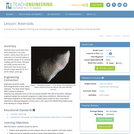
In this lesson, students learn some basic facts about asteroids in our solar system. The main focus is on the size of asteroids and how that relates to the potential danger of an asteroid colliding with the Earth. Students are briefly introduced to the destruction that would ensue should a large asteroid hit, as it did 65 million years ago.
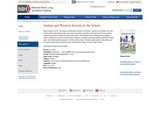
Newly revised in 2012! This easy-to-read booklet is perfect for teachers, coaches, and families who want to help students with asthma take part in sports and physical activities. Discusses how to help students control their asthma and follow an asthma action plan. Also explains how to manage asthma triggers, ensure students have access to their asthma medicines, recognize worsening asthma symptoms and take action, and modify activities based on a childÂs asthma status. Includes sample asthma action plans and information about using a peak flow meter, metered-dose inhaler, and dry powder inhaler.
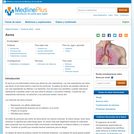
This patient education program explains asthma including the causes, symptoms, and treatment of the disease. This resource is a MedlinePlus Interactive Health Tutorial from the National Library of Medicine, designed and developed by the Patient Education Institute.

This is a page on the Fast Plants website, describing the AstroPlants variety of Fast Plants (Brassica rapa). This page includes suggestions for investigations and teaching applications using this seed variety.
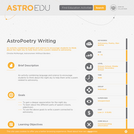
An activity combining language and science to encourage students to think about the night sky to help them write a poem related to astronomy.

What do astronauts do when they need a sugar fix? Reach for the candy bag or, as they're labeled aboard the International Space Station (ISS), "candy coated chocolates."
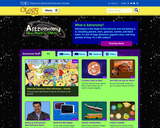
This website has five great astronomy activities! By engaging in these activities, you can learn about the Milky Way Galaxy, the Sun, the Big Dipper, and stars!
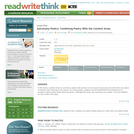
Students' responses to this lesson will be out of this world after they've researched astronomy to write poetry and compile a poetry book.